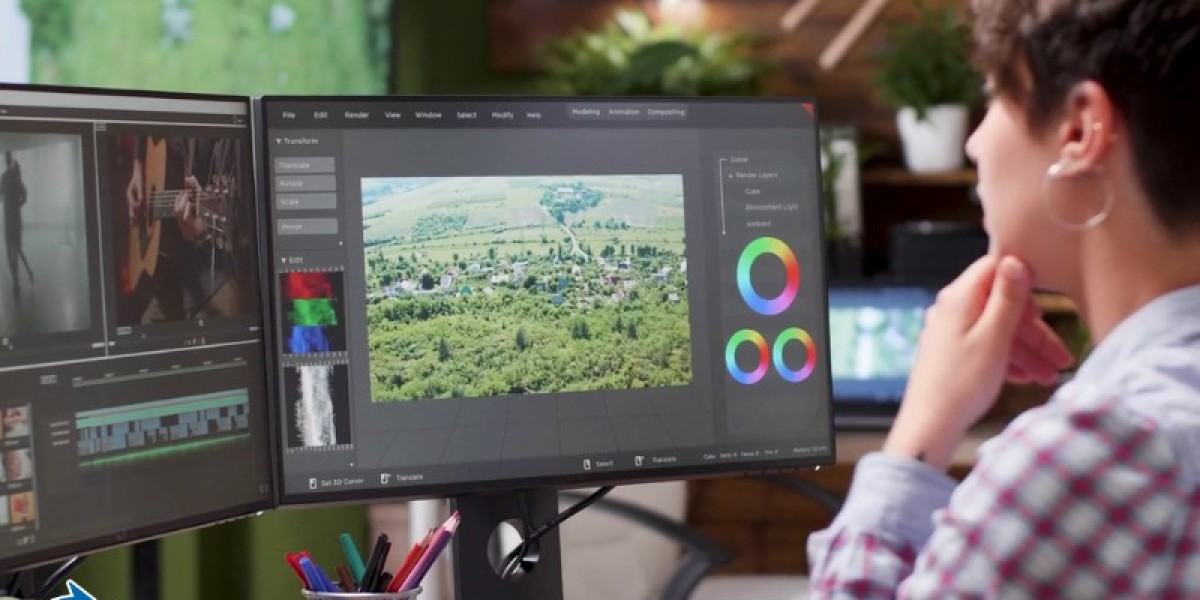Introduction
In the digital age, having the right image editing tools is crucial for creating professional and visually appealing content. Whether you’re a designer, photographer, or a business professional, the right software can enhance your work significantly. This guide introduces five essential image editing tools—Adobe Photoshop, Canva, GIMP, Adobe Lightroom, and Pixlr—highlighting their key benefits and providing user tips for maximizing their potential. These tools cater to a range of needs from basic design tasks to advanced photo editing, making them indispensable for any office environment.
Adobe Photoshop
Adobe Photoshop is a powerful image-editing software widely used by professional designers, photographers, artists, and casual users. It offers essential tools for creating stunning visuals, including retouching, compositing, color correction, and painting. Compatible with both macOS and Windows, Photoshop is accessible through the Adobe Creative Cloud subscription. Its user-friendly interface and versatility make it suitable for tasks ranging from photo editing to web design, helping users craft precise and creative visuals that stand out in the competitive field of design.
key features of Adobe Photoshop
- Advanced Editing Tools: Precision tools for cropping, straightening, rotating, and flipping images.
- Layer Support: Powerful layer-based editing for complex compositions.
- Selection Tools: Various selection tools, including the Magic Wand, Quick Selection, and Lasso tools, for precise editing.
- Retouching and Healing: Tools like the Clone Stamp, Healing Brush, Patch Tool, and Content-Aware Fill for retouching images.
- Filters and Effects: A vast array of filters and effects to enhance and stylize images.
Canva
Canva is an Australian-based graphic design platform that allows users to effortlessly create various design materials such as social media graphics, portfolios, presentations, newsletters, posters, brochures, and menus. Accessible on both desktop and mobile devices, Canva offers hundreds of templates, and a rich selection of colors, fonts, illustrations, GIFs, and graphics. Its user-friendly interface makes it ideal for users without prior design experience, while its affordability and customizable features cater to businesses of all sizes. Canva’s free version provides basic design tools, and the paid version offers advanced features and additional design elements.
key features of Canva
- Drag-and-Drop Interface: User-friendly design tool that simplifies creating layouts.
- Extensive Template Library: Thousands of templates for various purposes, including social media, presentations, posters, and more.
- Graphic Elements: Access to millions of photos, illustrations, icons, and fonts.
- Collaboration Tools: Real-time collaboration capabilities for team projects.
- Brand Kit: Customizable brand kits for consistent branding across all designs.
GIMP (GNU Image Manipulation Program)
GIMP (GNU Image Manipulation Program) is a powerful open-source software widely used for image editing and graphic creation. Available on Windows, macOS, and Linux, GIMP offers a range of tools for manipulating, enhancing, and creating digital images. Key features include comprehensive image editing tools, layer-based editing for managing multiple elements independently, and advanced retouching capabilities. These features make GIMP a versatile choice for both amateur and professional users.
key features of GIMP
- Advanced Photo Editing: GIMP offers a wide range of photo retouching and editing tools, including color correction, noise reduction, and customizable brushes.
- Support for Layers: Like professional-grade software, GIMP supports layer-based editing, allowing for complex image compositions.
- Customizable Interface: Users can tailor the interface to their preferences with dockable and detachable panels, customizable toolsets, and flexible window management.
- Extensive File Format Support: GIMP supports a wide variety of file formats, including JPEG, PNG, GIF, TIFF, PSD, and many more.
- Plugins and Extensions: GIMP’s functionality can be extended through a wide array of plugins and scripts, many of which are freely available from the GIMP community.
Adobe Lightroom
Adobe Lightroom is a powerful photo editing and organization tool, perfect for photographers and anyone handling large volumes of images. It offers non-destructive editing, allowing changes without altering the original files, and features presets for quick enhancements. With advanced color grading, users can fine-tune colors with precision. Lightroom also excels in photo organization, using keywords, tags, and collections, and supports cloud syncing, enabling access to photos and edits from any device
key features of Adobe Lightroom
- Advanced Photo Editing: Precise adjustments with tools for exposure, contrast, color balance, and more.
- Non-Destructive Editing: Edit photos without altering the original image, preserving the original data.
- RAW File Support: Import, edit, and manage RAW files from various camera brands.
- Organizational Tools: Advanced organization options with keywords, tags, ratings, and collections.
- Presets and Profiles: Apply presets for quick edits and create custom profiles for consistent photo styles.
Pixlr
Pixlr is a comprehensive suite of AI-powered SaaS creative tools that includes Pixlr.com, Designs.ai, and Vectr.com. Pixlr.com stands out with its cloud-based image editing capabilities, offering features like AI-powered auto background removal, a variety of filters and artistic effects, and support for layer-based editing similar to Photoshop. Additionally, Pixlr provides a mobile app for convenient photo editing on the go, along with access to numerous templates and design elements to enhance your creative projects.
key features of Pixlr
- AI-Powered Tools: Advanced tools like auto background removal streamline and simplify the editing process.
- Filters and Effects: A wide selection of artistic filters and effects to enhance and stylize photos.
- Layer Support: Similar to Photoshop, Pixlr supports layer-based editing for more complex and detailed projects.
- Mobile App: Edit photos conveniently on smartphones with the Pixlr mobile app.
- Templates and Graphics: Access a variety of templates and design elements to create visually appealing designs effortlessly.
Conclusion
Incorporating the right image editing tools into your office can significantly enhance the quality and efficiency of your visual content. Adobe Photoshop, Canva, GIMP, Adobe Lightroom, and Pixlr each offer unique features that cater to various needs, from simple design tasks to advanced photo editing. By mastering these tools and following the user tips provided, you can create professional and visually appealing content that stands out in today’s digital landscape.
DTP Labs is a desktop publishing company based in New Delhi, India. We offer book publishing Services, PDF to Word conversions, post-translation DTP, and e-learning localization services to translation agencies worldwide. To avail of our services, check out our website www.dtplabs.com, or contact us at info@dtplabs.com.








